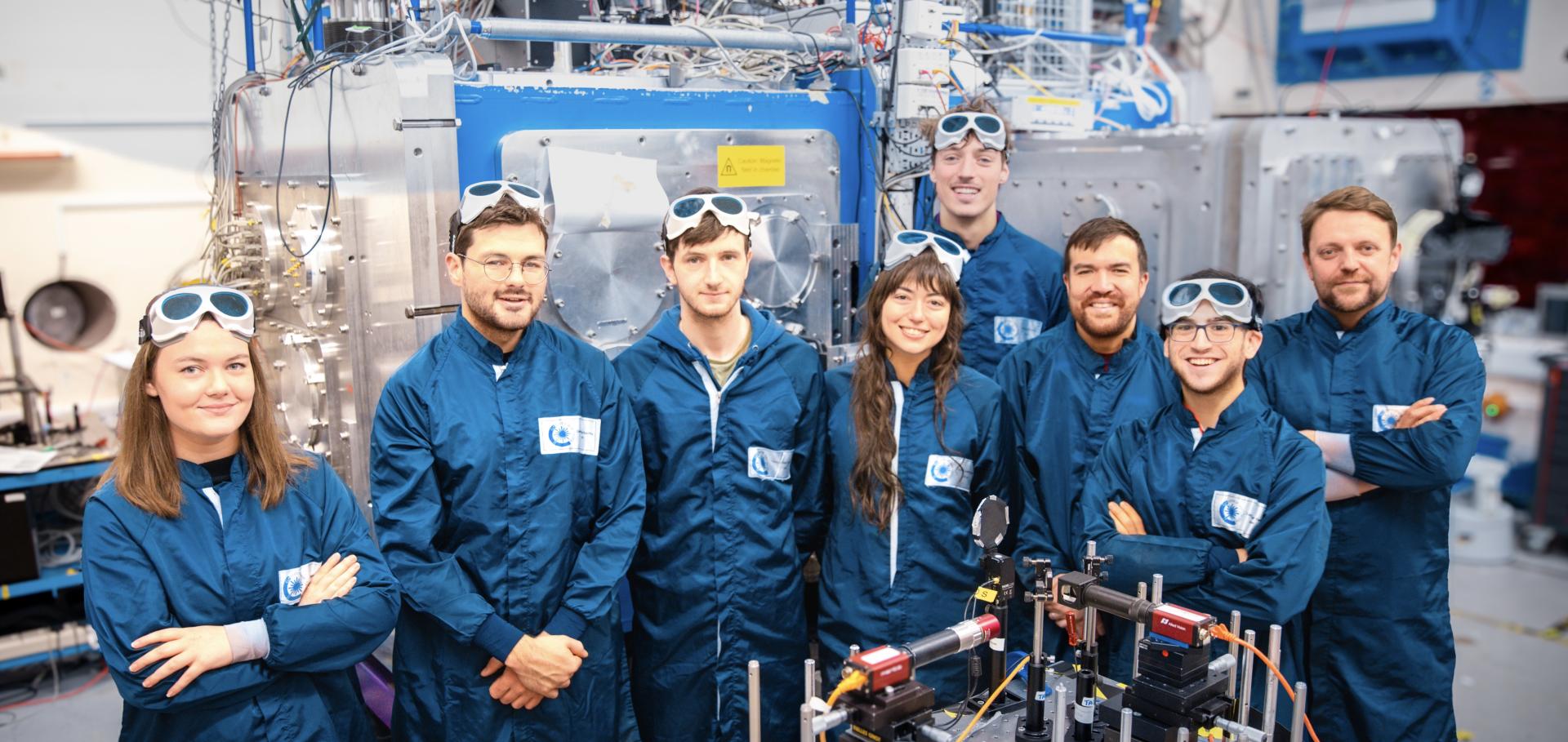Gravitational waves from high-power twisted light
Physical Review D American Physical Society 110 (2024) 044023
Abstract:
Recent advances in high-energy and high-peak-power laser systems have opened up new possibilities for fundamental physics research. In this work, the potential of twisted light for the generation of gravitational waves in the high frequency regime is explored for the first time. Focusing on Bessel beams, novel analytic expressions and numerical computations for the generated metric perturbations and associated powers are presented. The gravitational peak intensity is shown to reach 1.44 × 10−5 W.m−2 close to the source, and 1.01 × 10−19 W.m−2 ten meters away. Compelling evidence is provided that the properties of the generated gravitational waves, such as frequency, polarisation states and direction of emission, are controllable by the laser pulse parameters and optical arrangements.Attosecond and nano-Coulomb electron bunches via the Zero Vector Potential mechanism
Scientific Reports Springer Nature 14:1 (2024) 10805
Abstract:
The commissioning of multi-petawatt class laser facilities around the world is gathering pace. One of the primary motivations for these investments is the acceleration of high-quality, low-emittance electron bunches. Here we explore the interaction of a high-intensity femtosecond laser pulse with a mass-limited dense target to produce MeV attosecond electron bunches in transmission and confirm with three-dimensional simulation that such bunches have low emittance and nano-Coulomb charge. We then perform a large parameter scan from non-relativistic laser intensities to the laser-QED regime and from the critical plasma density to beyond solid density to demonstrate that the electron bunch energies and the laser pulse energy absorption into the plasma can be quantitatively described via the Zero Vector Potential mechanism. These results have wide-ranging implications for future particle accelerator science and associated technologies.Energy gain of wetted-foam implosions with auxiliary heating for inertial fusion studies
Plasma Physics and Controlled Fusion IOP Publishing 66:2 (2023) 025005
Abstract:
Low convergence ratio implosions (where wetted-foam layers are used to limit capsule convergence, achieving improved robustness to instability growth) and auxiliary heating (where electron beams are used to provide collisionless heating of a hotspot) are two promising techniques that are being explored for inertial fusion energy applications. In this paper, a new analytic study is presented to understand and predict the performance of these implosions. Firstly, conventional gain models are adapted to produce gain curves for fixed convergence ratios, which are shown to well-describe previously simulated results. Secondly, auxiliary heating is demonstrated to be well understood and interpreted through the burn-up fraction of the deuterium-tritium fuel, with the gradient of burn-up with respect to burn-averaged temperature shown to provide good qualitative predictions of the effectiveness of this technique for a given implosion. Simulations of auxiliary heating for a range of implosions are presented in support of this and demonstrate that this heating can have significant benefit for high gain implosions, being most effective when the burn-averaged temperature is between 5 and 20 keV.Towards more robust ignition of inertial fusion targets
Physics of Plasmas AIP Publishing 30 (2023) 022702
Abstract:
Following the 1.3 MJ fusion milestone at the National Ignition Facility, the further development of inertial confinement fusion, both as a source for future electricity generation and for high energy density physics applications, requires the development of more robust ignition concepts at current laser facility energy scales. This can potentially be achieved by auxiliary heating the hotspot of low convergence wetted foam implosions where hydrodynamic and parametric instabilities are minimised. This paper presents the first multi-dimensional Vlasov-Maxwell and particle-in-cell simulations to model this collisionless interaction, only recently made possible by access to the largest modern supercomputers. The key parameter of interest is the maximum fraction of energy that can be extracted from the electron beams into the hotspot plasma. The simulations indicate that significant coupling efficiencies are achieved over a wide range of beam parameters and spatial configurations. The implications for experimental tests on the National Ignition Facility are discussed.
Attosecond and nano-Coulomb electron bunches via the Zero Vector Potential mechanism
Scientific Reports 14, 10805 (2024)

